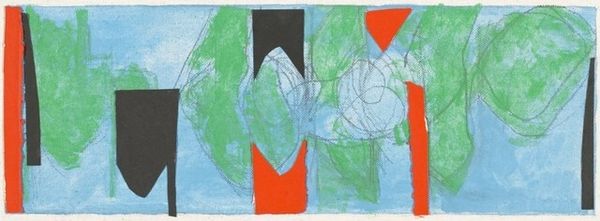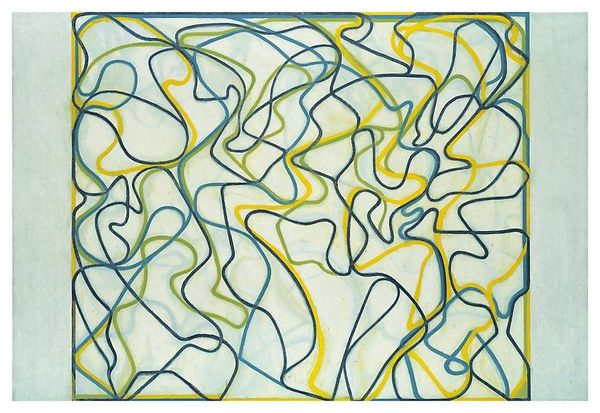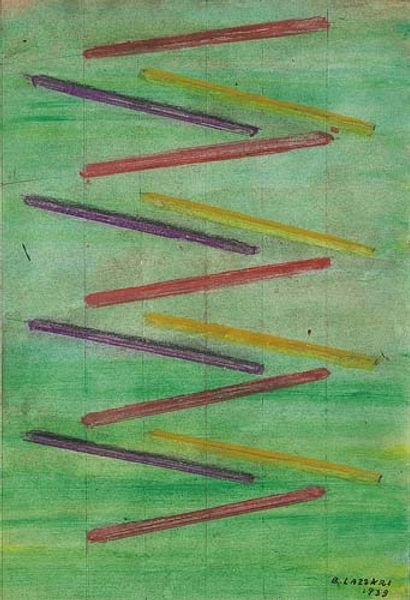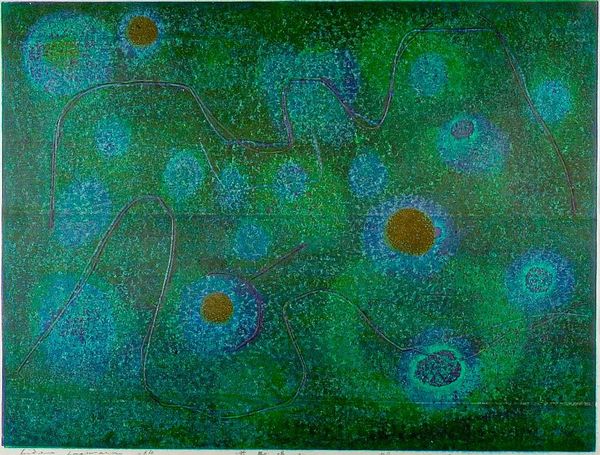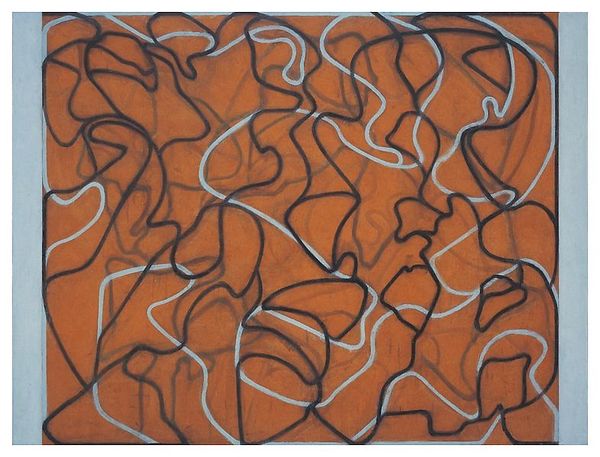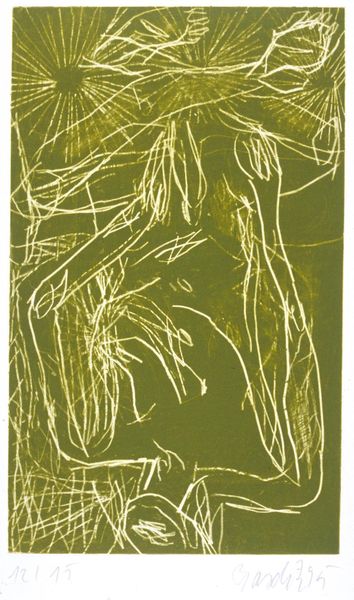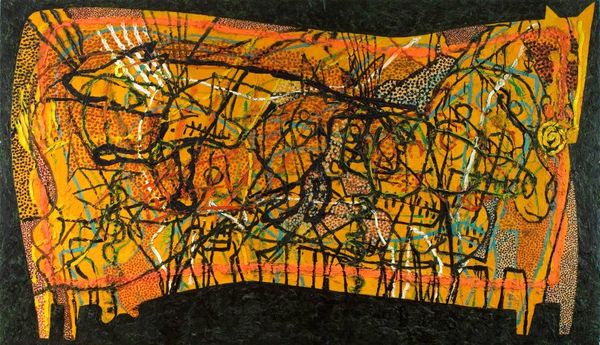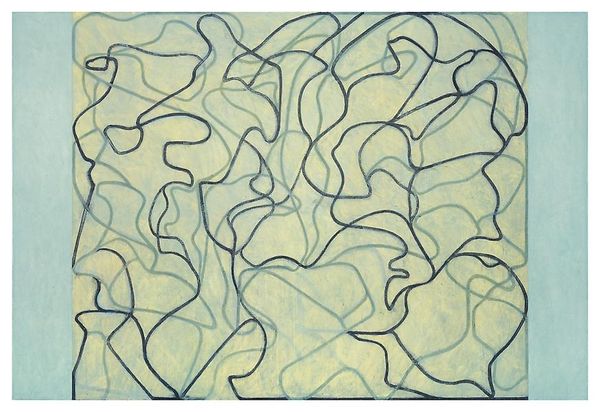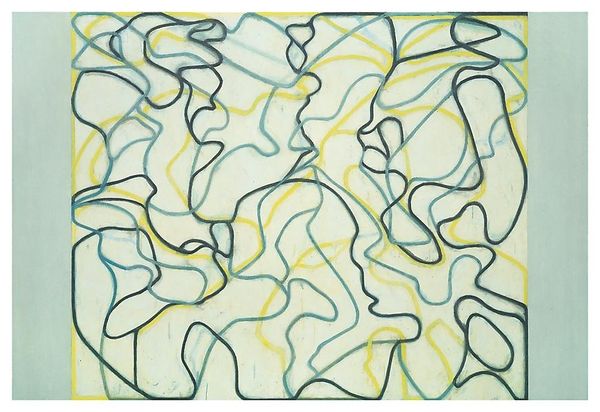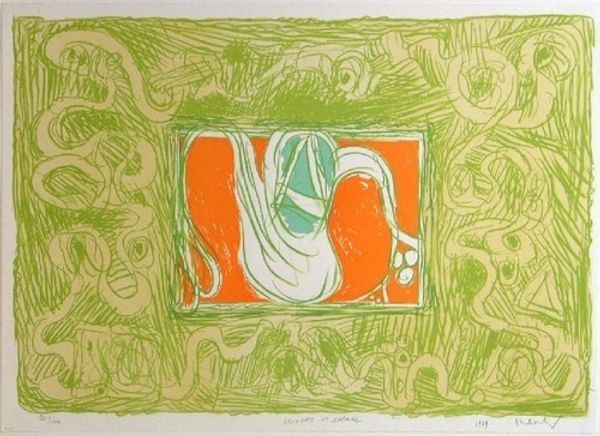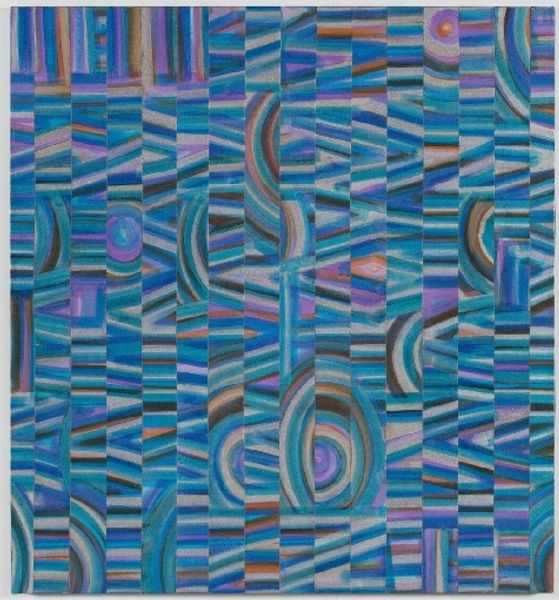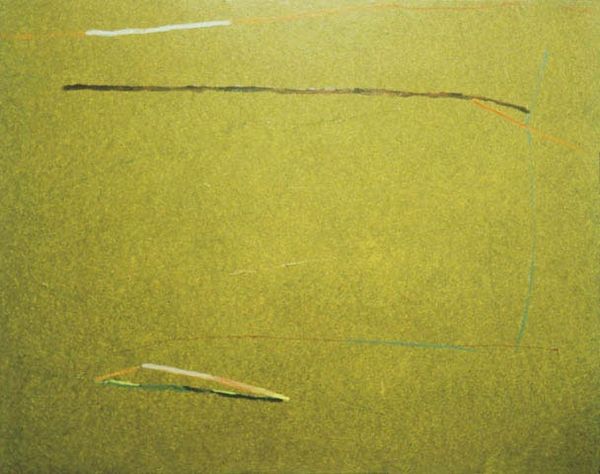
mixed-media, painting
#
abstract-expressionism
#
mixed-media
#
organic
#
painting
#
form
#
abstract pattern
#
organic pattern
#
abstraction
#
line
Copyright: Tihamer Gyarmathy,Fair Use
Curator: Welcome. We're here today to look at Tihamer Gyarmathy's 1952 painting, "Signs," created using mixed media. Editor: My initial impression is one of floating—a calm yet directionless expanse. The horizontal banding provides an underlying structure to contrast against the more fluid lines floating above. Curator: The linear elements are interesting. The artist’s lines—their weight, texture, and color—are a clear departure from traditional representational forms, focusing instead on the expressiveness of the line itself as the primary subject matter. Editor: Do you find this 'expressiveness' to be a product of pure formal concerns? Because I read the work differently. Looking at post-war Hungarian art, Gyarmathy's seemingly innocuous "Signs" can be seen as a coded response to oppressive regimes. Abstraction allowed artists a space to critique indirectly. Curator: Interesting reading! But isn’t the act of extracting overt socio-political meaning somewhat reductive? The composition directs my focus more toward how the elements work in concert—how the limited color palette, the tension between the horizontal ground and curvilinear shapes creates visual interest. Editor: I disagree; art exists within—and reacts to—the world. Think about it, “Signs” made shortly after WWII. I can’t help but imagine each line signifying fragmented stories, resistance, subtle acts of rebellion masked under abstraction. The choice of colours too; is this just a random palette or a specific combination with coded political associations? Curator: Whether intentional or not, you introduce an additional interpretative layer that many viewers might appreciate, adding new dimension. And certainly this painting exists not in a vacuum. But do we have definite proof or documentation of such association by Gyarmathy? Editor: Not direct evidence, necessarily; it’s often in the suggestive details, the choices that don't immediately announce themselves, that real context appears. Regardless, it gives us an insight of those days. Curator: Well, you’ve certainly complicated my purely visual experience, highlighting the many social dynamics inherent in visual art, making this painting even more complex and compelling than before. Editor: That's the beauty of art history; to question the way we read art, its relation to identity, to politics, and culture and vice versa. And ultimately, to start talking.
Comments
No comments
Be the first to comment and join the conversation on the ultimate creative platform.
